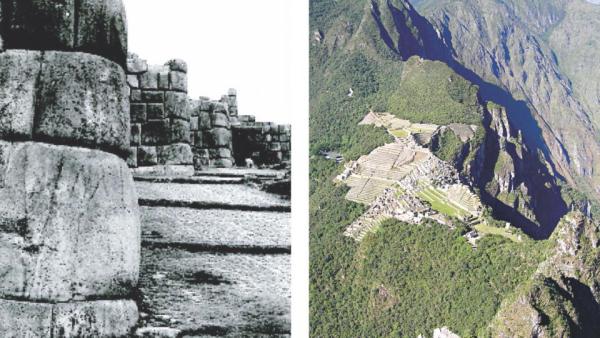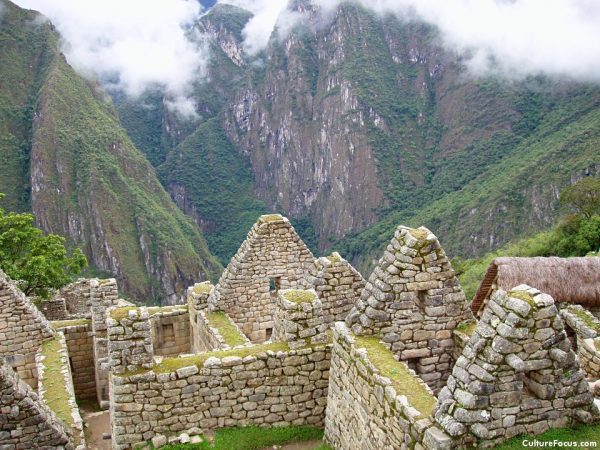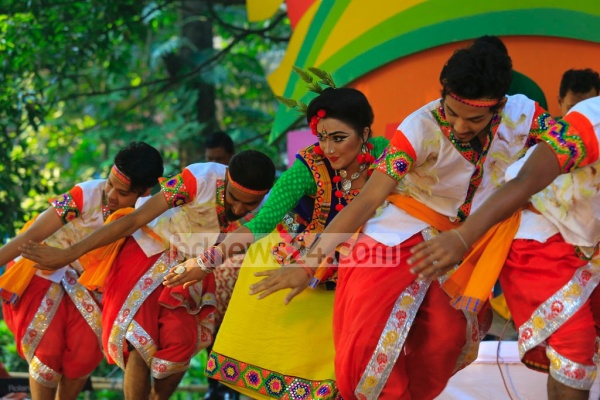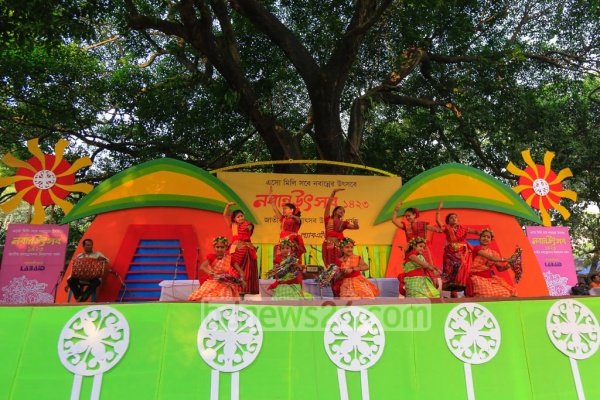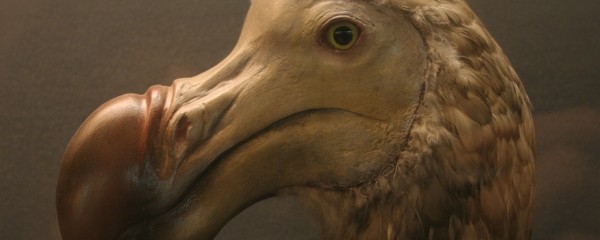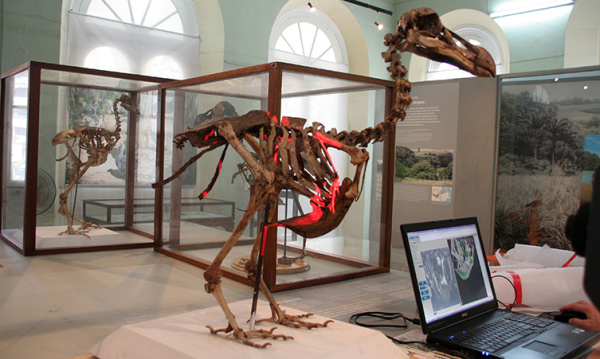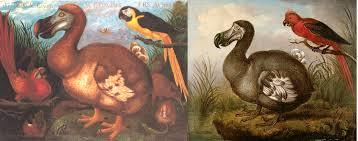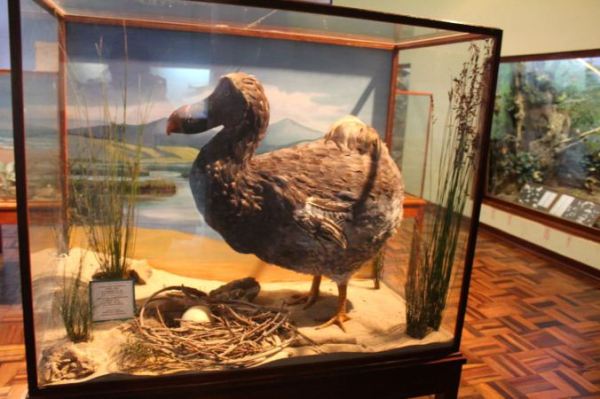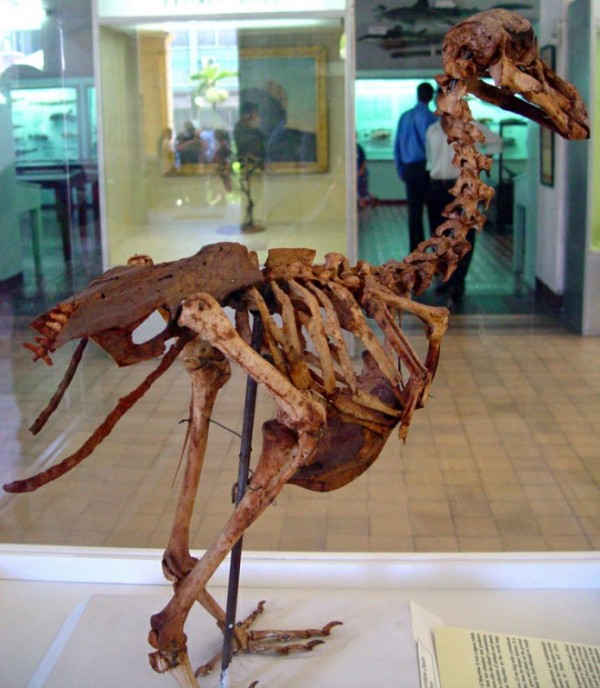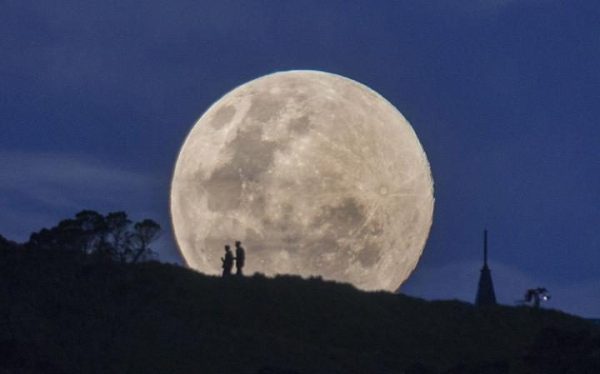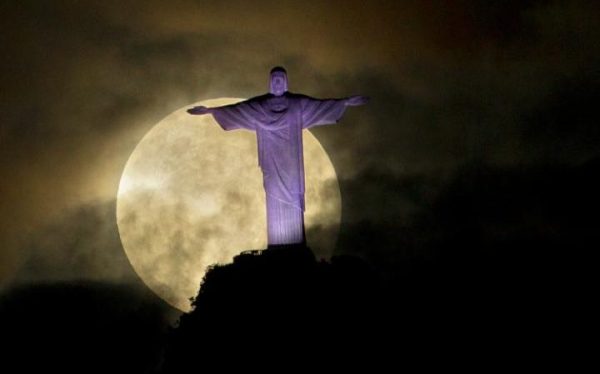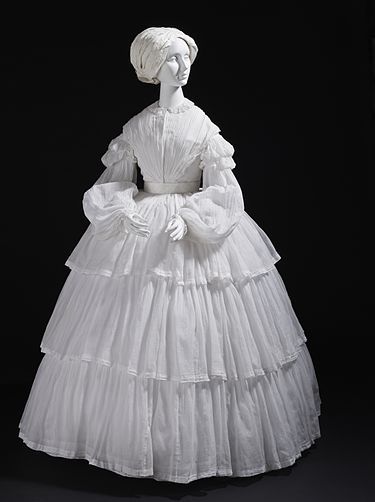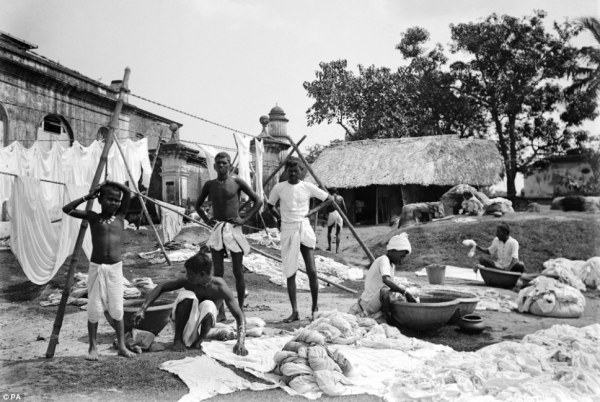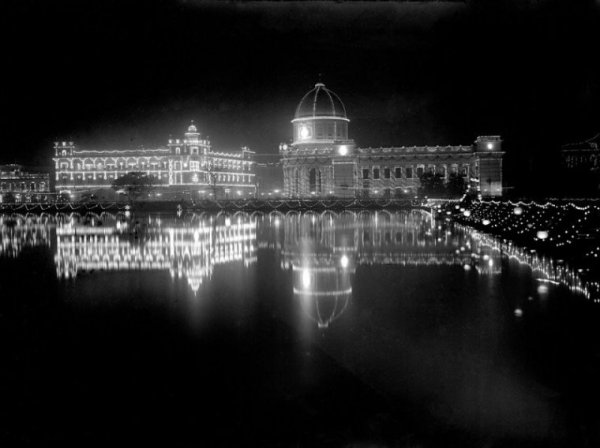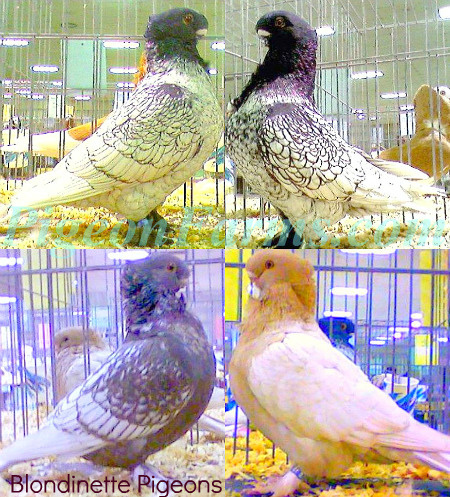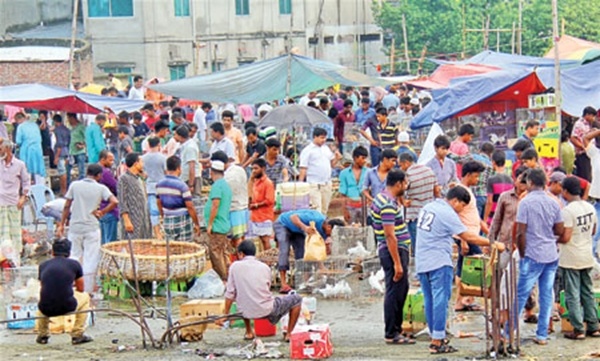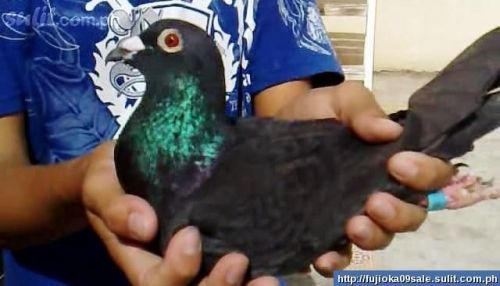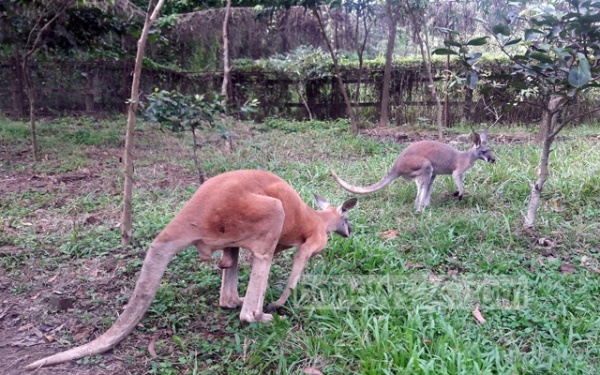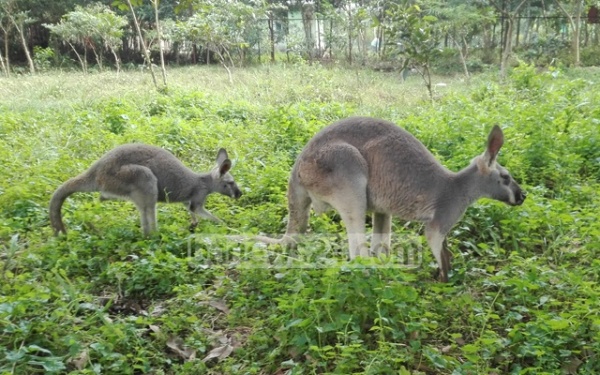 The Inca Civilization
The Inca Civilization
|
Posted:Nov 23, 2016 7:12 am
Last Updated:Feb 23, 2017 3:46 am 11347 Views
|
Inca Civilization
Just two words!
No more, no less! But they tell a story consisting of more than thousands of words!
Yes, I meant the words Inca Civilization!!
It is one of the short lived civilizations that were flourishing across vast oceans unknown to the Europeans, Africans and the people of the continents located on the other side of the Pacific Ocean until Columbus landed in the Americas in 1491.
When I was a school student, many years before, my dad presented me with a book that focused on ancient civilizations. He told me to read and learn the past history of the human beings!
The book contained Chapters on Inca as well as Mayan civilizations in addition to our own Indus Valley and Egyptian civilizations. Among all, Inca civilizations impressed me so much that I decided to visit Peru to learn more about these courageous and highly innovative people when I grow up. But it is yet to be materialized although I traveled a number of countries for various reasons during my life since passed!
The Inca civilization was formed by ethnic Quechua people also known as Amerindians. They can be traced back in the Andes region during 12th century A.D.
This small high land tribe ruled the largest empire ever seen in the Americas and possibly the largest empire in the world during early 16th century.
It is really surprising that the Incas could conquer such a vast territory within such a short time!
The Inca Empire was greater than the Ming Dynasty of China and larger than the Ottoman Empire. The capital of Inca Empire was located in Cusco, Peru and the Empire was extended from Ecuador in the north, central Chili in the South, Bolivia in the east and the Pacific Ocean in the west. Approximately more than 12 million people from 100 different ethnic groups lived in the empire during its peak period.
How could these people rule such a vast empire during a period when central planning was unknown to the world?
Perhaps, it was possible because the empire had a complex stratified vertical society governed by the Inca and his relatives.
The rulers introduced a well-devised agricultural and roadway system, along with a language and a centralized religion based on the worship of Sun and the Sapa Inca and his , only to be perished by the diseases and the superior weaponry of Spanish invaders.
The last bastion of the Inca Empire was overtaken by the Spanish invaders in 1572.
It may also be mentioned here that the Incas were wise enough to follow a centrally planned economic policy, and a system to collect tribute, supported by a draconian law system.
Perhaps, even the so called civilized people living across an Ocean at that time, did not know much about food security and its fair distribution, free health care and education system that could keep the people happy and loyal to their rulers! The Incas knew these and succeeded even though there was no writing system!
The Inca cultures have left many ideas for posterity to explore and ponder upon! The best of these ideas can be explored minutely in order to mix the same with the current ideas if possible, to transform the same into a combined one for taking it to the highest level that the present day human imagination could conceive of for enjoying its benefits each and every day!
May we now view below some of the photos of the architectural wonders that the Inca Civilization has left behind for us to see and wonder in amazement? Kindly see the photo #1 below. Can we even guess how the wall was built five centuries before without using modern building tools? It may also please be remembered that wall was built in the city of Cusco which is an earthquake zone! The wall still exists to amuse us.
The Incan citadel, Machu Picchu, set high in the Andes Mountains in Peru, above the Urubamba River valley, that was lost after the Spanish invasion, would only amaze the visitors for many reasons! It is renowned for its dry- stone walls that fuse huge blocks without the use of mortar, intriguing buildings that play on astronomical alignments and panoramic views (Photo # 2).
Now let us view other photos depicting breathtaking Inca Architecture and ponder in amazement!

|
|
|
11
Comments
|
|
 New Crop Festival 2016.
New Crop Festival 2016.
|
Posted:Nov 18, 2016 6:08 pm
Last Updated:Nov 22, 2016 7:04 am 11664 Views
|
Nabanno Utshab.
Here in this country of mine, we celebrate many festivals during a year that is related to the religions we individually or collectively practice.
Even though, we are a part of the turbulent sub-continent, we Bangladeshis live in a country where communal harmony still exists even though interested quarters try to disturb such harmony from time to time.
We consider our country a secular one where major religious groups live together side by side and practice their faiths peacefully too. Readers may kindly refer to my previous blog titled “All Souls Day Celebration”. The Christian Community, especially the Catholic Christians of this land celebrate this festival peacefully every year. We feel proud to say that we respect and participate in each others festivals.
What does “Nabanno Utshav” means in English and why it is celebrated by us?
“Nabanno” is a Bengali word meaning “Nobo-Onno” . While Nobo in English means “New”, Onno stands for “Rice or Food”. So, literally it can be translated in English as “New Rice or Food”. One can also translate it as “New Crop”. I can’t do better than this!
The Bengali word “Utshab” can be safely translated into English as “Festival”. So, Nabanno Utshab in English means “ New Rice or Food Festival” or “New Crop Festival”, or whatever one wants to say!
“Nabanno” festival is not a religious festival.
It is a festival that used to be celebrated in the past mostly in the rural Bangladesh.
Now, those of us who prefer a city life also celebrate this festival. Hindu, Muslim, Buddhist and Christians as well as tribal people participate in Nabanno Utshab. It is a festival of all the communities who are Bangladeshis.
Now is the season to harvest new crops from the fields and bring the harvested crops home.
As usual the festival was celebrated everywhere with food, dance and music on the first day of Bengali month of Agrahayan in Dhaka, organized by Jatiya Nabanna Utshab Udjapan Parshad (National Harvest Festival committee).
Some villages have arranged fair, cultural programs to celebrate Nabanna. However, dates of celebration of Nabanna Festival might have varied from village to village.
I take this opportunity to post 10 photos of current year’s Nabanna Utshab for the readers to view here under: Needless to say that none of these pictures were taken by me ! Pictures #4 and #5 shows tribal people participating in the festival.
Photo Credits: Mostafigur Rahman, bdnews24.com

|
|
|
10
Comments
|
|
 All souls' day celebration.
All souls' day celebration.
|
Posted:Nov 17, 2016 2:12 pm
Last Updated:Mar 13, 2017 11:14 am 10895 Views
|
As usually done every year, November 2 last was observed here in this country by the Catholics as the All Souls’ Day, a day of prayers for the dead. Some of the photos of the celebration taken in Dhaka and Chittagong on the day are posted here under:
Courtesy; gettyimages and BD News24.com. Photo Credit: : Muhammad Mostafigur Rahman.

|
|
|
6
Comments
|
|
 Few words about extinct vertebrates---Part I.
Few words about extinct vertebrates---Part I.
|
Posted:Nov 16, 2016 8:13 am
Last Updated:Feb 20, 2024 12:14 am 10523 Views
|
The flightless bird that was once called Dodo
The wingless bird called Dodo, lived happily and without fear of getting killed in Mauritius, now a tiny nation island off the coast of Africa in the Indian Ocean, until the end of sixteenth century, when humans introduced dogs and pigs and other animals onto this beautiful island and started hunting the birds themselves for meat.
It will not be out of place to mention that Dodo had no natural predators before the humans settled in the island where this vertebrate lived fearlessly from time unknown! That is why, Dodos although became curious about the new arrivals in their habitat, was not at all afraid of the humans and the other animals landed in the island along with the humans!
Perhaps none can now describe how this harmless unfortunate bird exactly looked like!
After browsing through various website, I have no hesitation to say that an authentic account of the bird Dodo could not be found in the net. The information that is available in the net or elsewhere about Dodo is based on assumptions and the result of scientific studies done on this extinct species in different places including the island of Mauritius! It is sad that no one bothered to keep either an authentic written description or even a sketch, or painting of Dodo before it gone extinct, for posterity to see!
The only description of this bird came from the Dutch sailors who traveled with Jacob van Neck, Dutch naval officer and explorer and one of the first person to ever describe the Dodo, were said to be the group of first humans to have seen the birds in 1598 though the Portuguese sailors were also said to have seen the bird, 91 years before the Dutch!
Some scientists believe that the Dodo was an extremely overweight vertebrate. Others guessed that the bird was like an Ostrich! I do not blame the scientists as they can only guess when complete Skeleton of the bird was not available in the world. Last night when I was drafting this article, a dear and close Mauritian friend of mine who still lives in the island called me for something else, told me on being asked about the bird, that a fossil of the bird was discovered on a river bed of the island a few years back and that may help the scientists to know more about this unfortunate creature!
It is most unfortunate that the Dutch sailors, who landed in the island in 1598 and colonized it subsequently, did not care to keep even a authentic painting of Dodo, the bird who did not know how to save itself from the late arrivals in the island who initially cleared some portion of forests where the bird lived and built shelters for themselves to live and put the remaining cleared forest land to other uses!
The Dutch considered the bird as a part of their food chain after arrival and eventually sent the bird to extinction within a very short time! The animals such as dogs, pigs and rats etc introduced in the island by the Dutch Settlers, also developed a taste for Dodo eggs and destroyed their nests and killed their chicks often.
The last of the Dodo was seen alive in the island in 1681.
Readers may please view here on this blog, the pictures and also skeletons of Dodo displayed in the glass cages of the National History Museum of Mauritius.
.
Next blog on another extinct vertebrates- part II

|
|
|
3
Comments
|
|
 A Treat For The Star Watchers!
A Treat For The Star Watchers!
|
Posted:Nov 14, 2016 12:14 am
Last Updated:Apr 25, 2018 12:19 am 11257 Views
|
This is a copy and paste job to remind my two grand daughters who live In New Zealand along with their parents to view this wonderful natural phenomenon!
The brightest moon in almost 69 years will be lighting up the sky this week in a treat for star watchers around the globe.
The phenomenon known as the supermoon will reach its most luminescent in North America before dawn on Monday. It will reach its zenith in Asia and the South Pacific on Monday. Across the international dateline in New Zealand, it will reach its brightest after midnight on Tuesday local time.
The moon orbits the Earth in an oval shape. The moon will be at its brightest this week because it is coming closer to the Earth along its elliptical orbit than at any time since January 1948. The supermoon will also bring stronger than usual high tides, followed by plunging low tides the next morning.
Viewers can expect to see a moon about 14 per cent larger in diameter and about 30 per cent brighter than when it's at its furthest from the earth. It won't be as big and bright again for another 18 years.
NASA says its closest approach will occur at 6:21 am EST (11:21 GMT / 16:51 IST) Monday when the moon comes within 221,523 miles (356,508 kilometers). That's from the center of the Earth to the center of the moon. Full moon will occur at 8:52 am EST (13:52 GMT / 19:22 IST).
According to the astronomy website earthsky.org, the term supermoon entered usage five years ago when the closest full moon fell on March 19, 2011. The scientific term is perigee full moon.
In 2034, the moon will come even closer, within 221,485 miles. That, too, will be a supermoon.
Picture# 6 : The Supermoon rises over Dhaka ,last night (November14,2016). posted on here on November 15,2016.
Source and Credit: Daily Sun, Monday, 14 November, 2016. AP.

|
|
|
5
Comments
|
|
 The Lost Fabric..
The Lost Fabric..
|
Posted:Nov 12, 2016 11:27 pm
Last Updated:Jan 15, 2024 11:16 pm 10535 Views
|
The fabric has come back again in different shades and colors after more than two centuries!
I am sure that all of us have heard, at least once, the word muslin, while buying expensive clothing from a super shop! Be it is in Dhaka, or in Paris or elsewhere in this world!
What does the word “Muslin” actually denotes or means?
According to English Dictionaries, ‘Muslin is a cotton fabric made in various degrees of fineness, often printed, woven or embroidered in patterns, especially a cotton fabric of plain weave, used for sheets and for a variety of other purposes. It is made in a wide range of weights from delicate sheers to coarse sheeting.’
I feel really proud to mention here that ‘early muslin was hand woven of uncommonly delicate handspun yarn’, produced especially in the region around the city of Dhaka, the capital of present day independent Bangladesh. The fabric also used to be exported to Europe during much of the 17th and early 18th centuries until the Bengali muslin industry was ruthlessly and systematically destroyed by the then colonial power for marketing their own “industrially manufactured textiles” in the Indian sub-continent as well as elsewhere!
It makes me sad to state here that none could even imagine now the extent of brutality that was committed by the colonial rulers to stop the weavers weaving the fabric! They did not hesitate to cut off the weavers thumbs in order to prevent them weaving muslin.
The extent of the brutality was described by William Bolts, a legendary Dutch merchant in his book, “Considerations on India Affairs”, in 1772. His book told the world that there were instances where 'thumbs were cut off' in order to stop the production of muslin.
It should also be noted here that William Bolt was also an important employee of the East India Company at that time! Anyone, who is interested to know more details about this inhuman atrocities committed by the then rulers, may consider to procure the book of William Bolts available in online book shops.
Some details can also readily be seen if anyone of us likes to Google the following:
“Considerations on Indian affairs by William Bolts”.
Among the tortured, beaten up and the maimed weavers, who could escape the atrocities, managed somehow to produce the fabric living elsewhere outside Dhaka and its adjacent areas but the quality of muslin gradually suffered to such great extent that its finesse was nearly lost for two centuries.
After Bangladesh became completely independent, various attempts to revive the muslin industry proved fruitful and fine quality of muslin fabrics are now being produced in the country for local consumption as well as for export too.
Three years back, in 2013, the traditional art of weaving Jamdani muslin in our country was included in the list of Masterpieces of the Oral and Intangible Heritage of Humanity by UNESCO.

|
|
|
7
Comments
|
|
 Century old rare photos of British Raj.
Century old rare photos of British Raj.
|
Posted:Nov 10, 2016 5:26 am
Last Updated:Nov 12, 2016 6:24 am 11046 Views
|
While browsing Google for an old photo of the Sunderbans, world’s largest mangrove forest located mostly in Bangladesh, I came across by chance a collection of black and white photos taken more than a century ago, capturing the essence of life in the sub-continent during the British Raj.
According to Ms.Sanskriti Sinha , the negatives of this collection of photographs, wrapped in the copies of the Statesman newspaper dating from 1914, were found in a shoe box in the archives of the Royal Commission on the Ancient and Historical Monuments of Scotland by chance!
I don’t know if the claim of Ms. Sinha is correct or not. However, I can tell everyone that some of the imageries of the photographs simply reminded me the tumultuous and horrible life that we had to live during the last 10 years of British Raj. They followed the famous divide and rule policy while governing us and they did not forget to leave us divided when they were forced to leave us free! I was a then passing the usual age of innocence!
As I am allowed to post only 10 of these amazing photographs here on this page, I have chosen them from those taken from various places of the Greater Bengal, especially most from Kolkata, the then capital of former Greater Bengal and also from Sunderbans area of my motherland!
Some of the photos uploaded here on this page relate to and highlight the celebrations of the visit of King George V and Queen Mary to the city of Calcutta (now called Kolkata) in 1912, and other photos depicts life of common men and women lived in Bangladesh, a century ago when my Dad was a college student!
I have intentionally avoided posting the pictures of the other side of life that most of the common men had to endure during British Raj for obvious reason.
Those who are interested to view all the 178 photos may please browse Google for finding them in one place.

|
|
|
7
Comments
|
|
 Like diamonds in the sky…
Like diamonds in the sky…
|
Posted:Nov 7, 2016 8:17 am
Last Updated:Mar 4, 2017 1:18 am 11076 Views
|
Fanatic Pigeon Racers of Dhaka.
Have you ever watched racing pigeons zoom out from their cage as soon as the doors are opened?
Just imagine the scene that happens after the cage doors are opened! You will be surprised to observe the birds are no where to be seen! They are all gone within seconds after they were released from the cage!
Where have they gone? Just look up overhead! You will see the pigeons flying in circular formation in the sky!
The fanatic pigeon lovers of Dhaka, the city where I live in now, call these flights of the pigeons as exercise flight. And they follow the routine almost daily if the weather is perfect for such flights.
Pigeon racing is a hobby. We know what hobby means! A hobby is regular activity done for pleasure during one’s leisure time. But breeding and racing pigeons is an interesting as well as time consuming hobby! It is an integral part of everyday life of a pigeon lover! It is a passion for them. A pigeon lover could never be either a racer or a breeder unless he is ready to give it countless hours of his time! And that may create problem for the enthusiast if he has no regular source of income! These men, obsessed to race or watch their pigeons in flight, simply can not spare times for their dear and near ones!
However, while pointing out the difficulties to pursue pigeon racing activities, I do not like to say that such hobby should be pursued by people like the Queen of England who has a large number of racing pigeons looked after by her stuffs trained for such job. People like us can also afford to indulge in such activities if the number of racing pigeons is within a manageable limit, say twenty or less!
I may mention here that the pigeon lovers of Dhaka house a large number of pigeons in the cages built on the rooftop of their houses where they live. Usually, they are the owner of such houses. The number usually may exceed hundreds of birds. Cages for small number of pigeons can easily be built on one's rooftop and the cost is bearable too. But for those who have large numbers of such pigeons, the cost is very high—both for building the cages and for their subsequent maintenance! The cages are needed to be built-in waste removal system. The pigeon lovers use wrought-iron cages as living quarters for the birds. Old and sick birds are housed in different cages.
There are a few dedicated pigeon markets in Dhaka where both buyers and sellers come to buy and sell the birds on a particular day of each week. The pigeons are not necessarily cheap. They are rather costly. But the cost does not discourage the fanatic pigeon lovers of Dhaka. They would not hesitate to spend more than one hundred thousand taka for a pair of fast flying rare pigeons. Fancy and high flying pigeons are in demand now and as such they are comparatively costly.
Previously, the pigeon lovers used to live in the old part of the city. Now many of them have shifted to an area of new Dhaka known as Mirpur. They have clubs for organizing pigeon racing and other activities related to it. Mostly, the traditional Giribuzz and Homer pigeons are mainly used for Pigeon Races! They prefer now Homer pigeons for the racing as this kind of bird can “fly longer and faster, reaching altitudes where tailwind pushes them”. The record holder Homer pigeon flew from the island of St. Martin, located in the Bay of Bengal, to its Dhaka home in two hours and forty minutes. The distance between Dhaka and St. Martin is approximately 510 kilometers.
To be a successful pigeon racer in this city of mine, one needs to be a passionate lover of pigeons, very patient, and own a house having enough spaces on its rooftop. Above all, such a person would need a regular source of income and a family who understand him!

|
|
|
6
Comments
|
|
 The Rat Race
The Rat Race
|
Posted:Nov 5, 2016 7:42 am
Last Updated:Nov 2, 2022 4:03 am 10966 Views
|
During the earlier days of my life when I was a Youngman, just out of the university, and was struggling to find a good job to survive in this cruel world, I caught up in the way of life without bothering to know what may happen to me in the long last, in a fiercely competitive struggle for survival in the competitive world of finance and money for having a decent living!
Perhaps this was the Rat Race I ran until I could no longer feel interested in running the race! I got tired of making money for the shareholders!!
I quit the rat race intentionally to live a simple life with the people I love. I feel so bad now for not being with the dear and near ones during the years I had been running the race for power and wealth!
I do not know what my actual status is now. However, I could say to my dear readers that I lament now constantly for the lost years of my life! But one thing I can say is that I am happy to be out of the race! I am no more in endless pursuit.

|
|
|
5
Comments
|
|
 Something About Kangaroos !
Something About Kangaroos !
|
Posted:Nov 3, 2016 10:04 am
Last Updated:Nov 4, 2016 11:49 am 10467 Views
|
Joey is a baby Kangaroo and by birth a Bangladeshi safari park dweller!
Joey is the first Kangaroo born in this particular Safari Park in Gazipur , Dhaka in May, this year! The park authorities did not tell the visitors about the birth earlier for fear of diseases and also security!
Joey left her mother’s pouch in the later part of August and was put in the intensive care unit of the park.
A newborn Kangaroo is pink in color, without any fur and it is only 3 to 4 centimeters in length at the time of birth. It lives in its mother’s pouch for few months. Usually on the 4th month, furs and limbs become visible.
It is now known that female kangaroos can determine the sex of their offspring. They can even delay gestation period.
The parents (Red Kangaroos) of Joey were brought from South Africa in the year 2014.
While the adult Kangaroo likes to eat beans, spinach, carrots, bananas, apples cucumber and also fresh grass, Joey is being fed nothing except mother’s milk. Usually, a baby Kangaroo drinks mother’s milk until it is 235 days old.
I did not know before I visited the park that:
A male Kangaroo is called a ‘boomer’
A female Kangaroo is called a ‘flyer’,
A baby Kangaroo is called a Joey.
The Kangaroos are Herbivores and habitats of mainly Australia. They are also found in Tasmania and in Papua New Guinea. May be someday, they could be found in large numbers in Gazipur, Dhaka. Because, it is also a tropical country where Kangaroos like to live!
Why a Kangaroo is called Kangaroo?
Is it not a foolish question to ask?
What should a grown up kangaroo be called other than a Kangaroo? But legend has that the first visitor from Europe asked a local Australian aboriginal what the name of the hopping animal was!
The aboriginal man replied, “Kangaru”.
The European thought that the name of the animal was Kangaroo! But he was wrong. The aboriginal man had actually told the European Visitor, “Hey, I don’t understand your question”. Therefore, the interpretation is not correct.
If anyone of you asks me how the name originated, my answer will be like the aboriginal, “kangaru”!
Do you want to know more about Kangaroos? Then grab a book on Kangaroos or you may go to Google if you do not like to look for the book!!

|
|
|
4
Comments
|
|





